Since you can’t predict every squall, it’s best to anchor for a storm. If one never comes, you’re fine. But if high winds hit, you’ll be prepared.
Dave and I strongly believe in anchoring as if we know it’s going to blow 50 . . . because sometimes it does. You may expect the possibility of a squall. But when it arrives, it may be stronger than predicted.
We’ve probably had about one 50-knot blast from a squall each year we’ve been cruising. Several have blown over 40, sometimes sustained. I’m not counting tropical storms and hurricanes, just “normal” weather in places not known for extreme conditions.
Our anchoring technique and ground tackle are our number-one form of insurance. We only carry liability insurance. But with hull insurance, you don’t want to drag into another boat, go on the rocks or even ground on sand. It also helps us sleep welll . . .
Anchoring Equipment
When we began preparing for our first hurricane anchoring, a book we referred noted that anchoring isn’t one piece of equipment. It’s a whole system. And one weak spot can cause a system to fail.
So we start with a good anchor. For us, that’s a Mantus. (Disclosure: I do earn a bit on Mantus sales through links here.Bbut we chose Mantus for our own anchor before we had that relationship. My life may depend on my anchor choice. And no amount of money will encourage me to use one I think is inferior). Mantus has a great reputation for setting, with a very sharply pointed weighted tip and a roll bar to assure that it is right side up so it can dig in. We have never had it fail to set first time, even in light grass. We haven’t encountered an area with only heavy grass.
Many older anchors just don’t set as well (or at all in challenging conditions). Some don’t reset if the wind or current changes. We did ride out a hurricane on a Bruce anchor. But ever since then, we’ve had a “new generation” anchor (first a Spade with our previous boat, now a Mantus . . . Rocna are good too). Fortress and Danforth are good in certain conditions. But they do very poorly at resetting when wind or current changes the direction of pull.
Then came the rode and snubbers/bridle. We used 125 feet of chain followed by 150 feet of Brait on our primary anchor. After the equipment from the previous owner fell woefully short, particularly on the chain, we invested in more chain. We somewhat regretted not going with all chain.
When we had more than 125 feet of rode out, our chain hook bridle (also from Mantus) didn’t work. We had to use two dock lines attached to the rode with rolling hitches as our bridle. Unfortunately, this is harder to remove in an emergenc). While the rope rode alone would provide the needed shock absorption, it would quickly chafe through on the bow roller. A bridle or snubber prevents this. And they provide a smoother ride on a catamaran, too. Note that a bridle or snubbers are crucial for shock absorption. And you must size them properly to provide a certain amount of stretch. This is one case where bigger isn’t necessarily better!
Boat Attachments
Attachment points on the boat are next. Beefy cleats with solid backing plates are best., Hawse holes for the snubbers to pass through also reduce chafe. This was the weak point on Barefoot Gal. The cleats were good sized but the backing plates could have been better.
Additionally, we consider a properly sized electric windlass to be vital safely gear.
- With an electric windlass, we’re willing to anchor and re-anchor. We would do it as many times as necessary to get a good set and in a location where we were both comfortable. If we were not both comfortable where and how we were anchored, we did it again. It’s was no good if one of us was worried!
- A windlass made it easy to raise anchor when the wind direction suddenly changed. It enabled us to leave in a hurry, if needed.
- Finally, since we are not worried about how much chain we’ll have to pull by hand, we are willing to anchor in slightly deeper water. That usually gave us a much greater safety margin from shore in the event that we did drag. It also allowed us to use a heavier (larger) anchor as our everyday anchor.
We use Sena Bluetooth headsets (2Talk Headsets are now available on The Boat Galley Store). Update:This set is different from the ones I owned. But they are the latest version and a little less money! Even in normal anchoring situations, it helps to talk things over. On our first boat, we used hand signals and occasional cockpit huddles to discuss what we wanted to do. Headsets are better. We did not use them when anchoring in rain. Then we fell back on hand signals and years of anchoring together. In the Bahamas where we were often trying to drop the anchor in a small sandy spot in the middle of grass, being able to talk was especially helpful. When you have as Dave a 5-foot circle to drop the anchor, verbal directions are much more precise than hand signals.
Finally, we used a smartphone anchor alarm to let us know if the anchor drags. There are many available for both iPhones and Android, as well as on many GPS/chartplotter units. We set the range to be slightly smaller than our distance from the anchor. That way it went off in a major wind shift, not just if we are dragging. A major wind shift usually precedes a squall; we’d like to know in any case with a big shift. Different alarms have different sounds. And some let you choose between several. Be sure to choose one that will wake you!
Anchoring Techniques
In an ideal situation, we come into an anchorage and motor around a bit while discussing where we might anchor. Things are not always ideal, however.
First, it is unlikely that where the chart has the little anchor symbol is the only place to anchor. It is , however, likely that there would be a cluster of boats there! We prefer to anchor a little bit away from other boats, where we have full 360-degree swinging room if possible. We consider the forecast wind direction, swell direction, where other boats may transit the anchorage. For example, consider local fishermen when anchored off a village. Consider anything else that may be pertinent.
Dave was almost always on the bow doing the anchor work and I was at the helm. When we decided to drop the hook, I went into neutral and coasted up to the spot. Dave would drop the anchor and play out the rode as we drifted backwards. In very light winds, I would put the boat briefly in reverse to get it moving slowly astern. We used at least 5:1 scope (high tide water + free board) and usually closer to 7:1.
We did not pull on the anchor at all at this time above what the wind might do.
Dave installed the bridle to give the anchor a bit of time to settle in. Once the bridle was on, I slowly (idle speed) reversed the boat to stretch out the chain. Dave was always convinced that the chain was fully extended before the GPS showsed 0.0 as the speed. I always continued the slow reverse until the GPS showed 0.0 knots.
I then slowly increased the RPMs (still in reverse) until we reached our typical cruising RPMs and held it there until the GPS again showed 0.0 knots. As I raised the RPMs, I usually saw a little movement at first as the anchor really dug in.all the catenary was taken out of the chain and the snubbers were stretched. The GPS may have shown 0.4 or 0.6 knots. Then we would fall back to 0.0. We’re set!
I returned the engine to neutral. After confirming that we were both happy with where we’re anchored, I’d turn the engine off and set the anchor alarm.
Of course, if the GPS does not go to 0.0, we don’t have a good set. So it was time to raise the anchor and do it again in a slightly different spot.
Yes, I’ve heard people say they don’t want to back down hard on their anchor because they might break it out. I’m not quite sure of the reasoning, to be honest. Part of backing down hard is to set the anchor. But it’s also to see if it will break out in a severe gust. I’d much prefer to know if we have a good set right away than at 2 AM in a squall!


Quickly find anchorages, services, bridges, and more with our topic-focused, easy-to-use waterproof guides. Covering the ICW, Bahamas, Florida, and Chesapeake.
Explore All Guides

Carolyn Shearlock has lived aboard full-time for 17 years, splitting her time between a Tayana 37 monohull and a Gemini 105 catamaran. She’s cruised over 14,000 miles, from Pacific Mexico and Central America to Florida and the Bahamas, gaining firsthand experience with the joys and challenges of life on the water.
Through The Boat Galley, Carolyn has helped thousands of people explore, prepare for, and enjoy life afloat. She shares her expertise as an instructor at Cruisers University, in leading boating publications, and through her bestselling book, The Boat Galley Cookbook. She is passionate about helping others embark on their liveaboard journey—making life on the water simpler, safer, and more enjoyable.
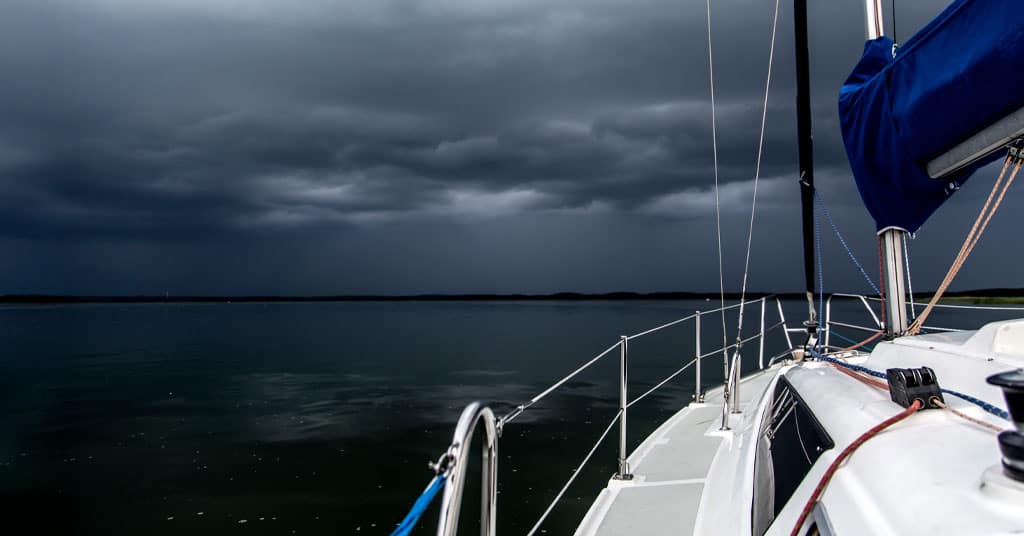
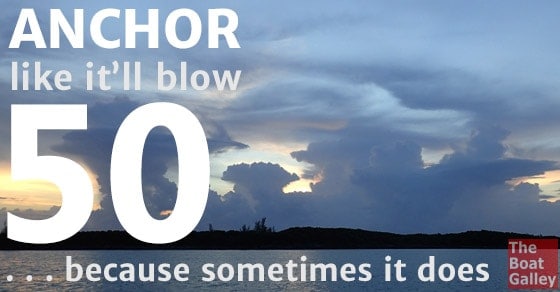




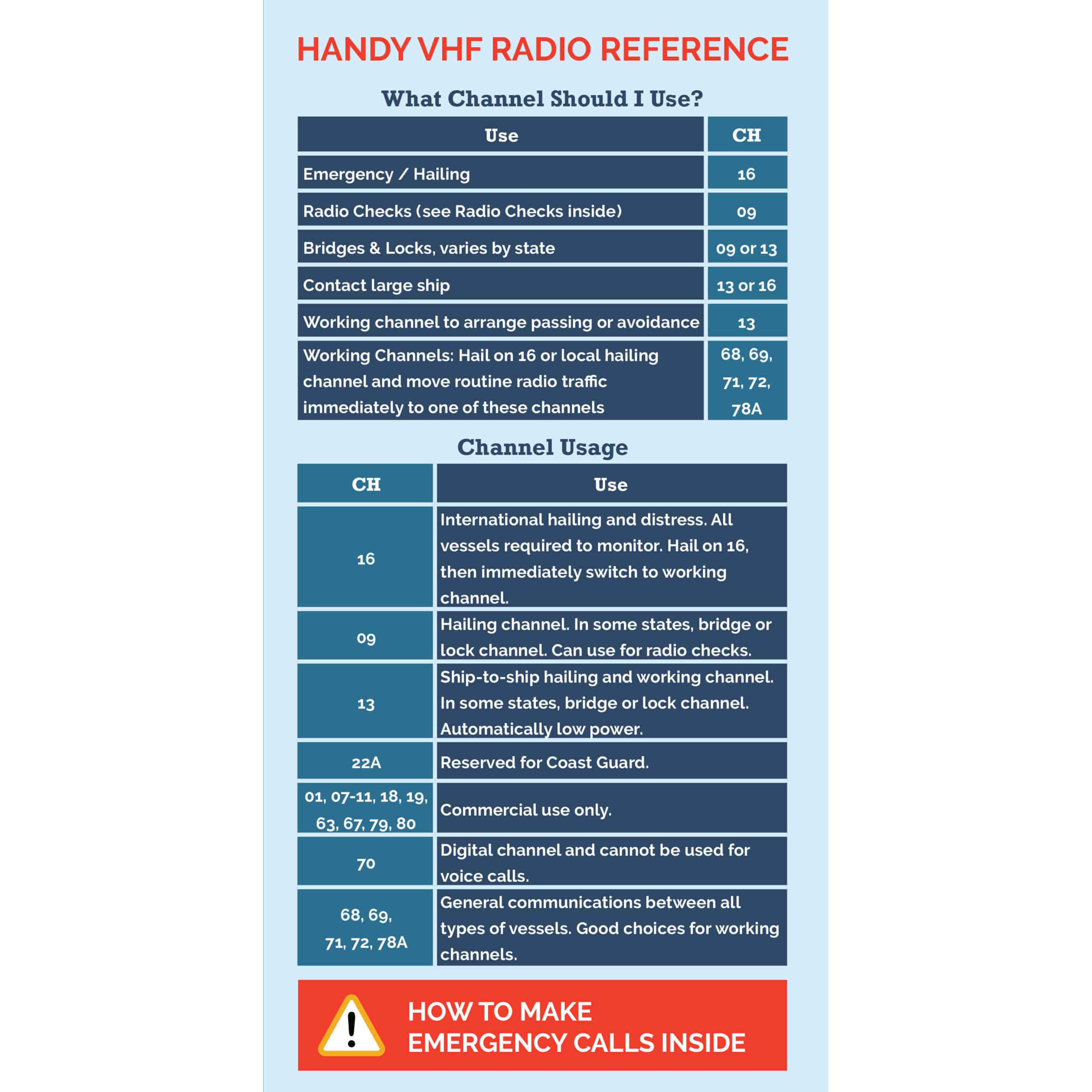


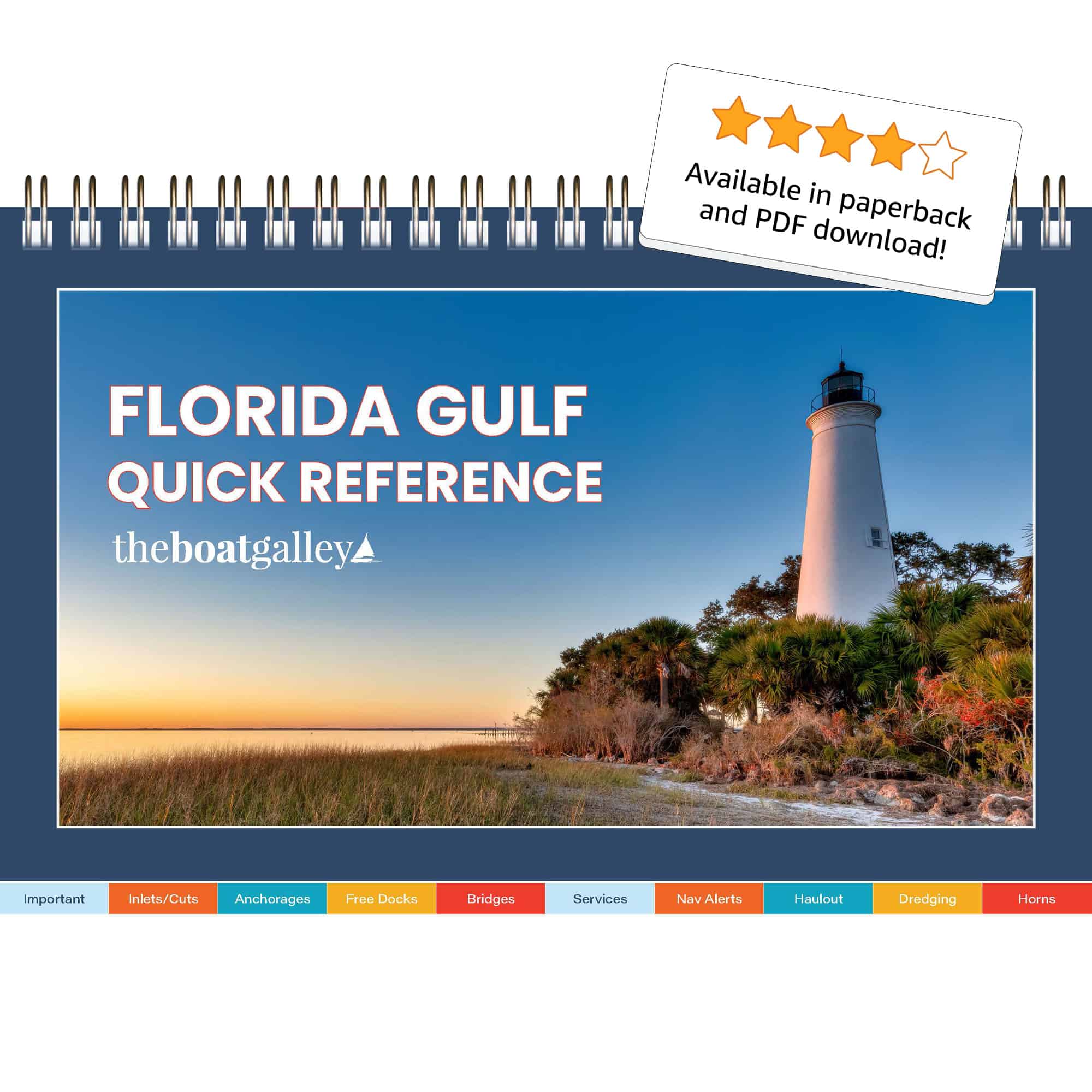

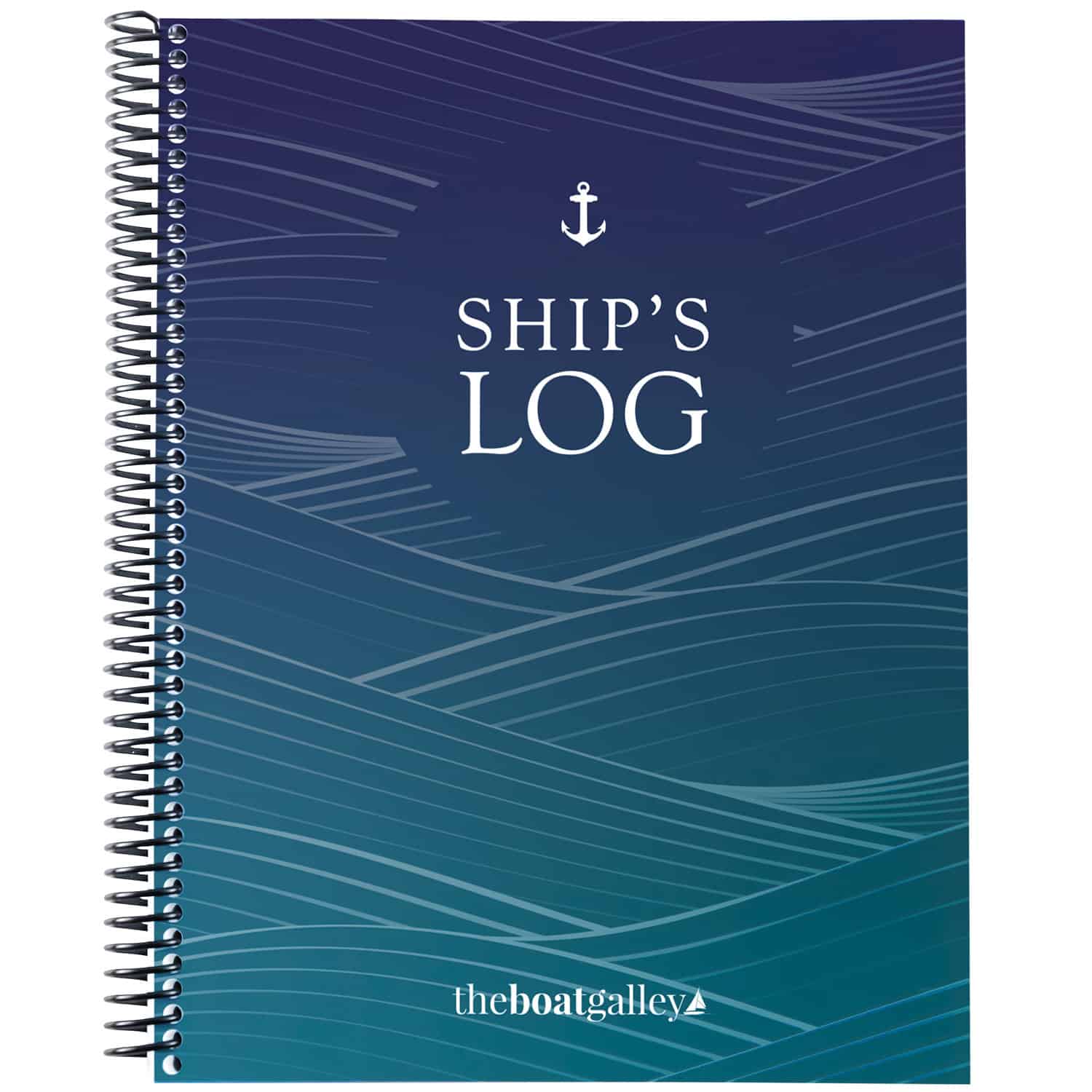
Carolyn Shearlock says
Most will — depends on age of the equipment. We prefer to use the one on the phone as mentioned in the post (I should have said WHY we prefer it) so we don’t have to keep the instruments on all the time (power consumption) and the one on the phone is MUCH louder than the one on our chartplotter.
Carolyn Shearlock says
We will “discuss” it with them first. If they still don’t move, and we think it’s an unsafe distance, we will move. I will not accept someone else’s assessment of what is safe for my boat so no, we won’t just say “oh, okay.”
Carolyn Shearlock says
If it happens frequently in the area where you are, you might want to invest in a laser range finder so you can tell them exactly how close they are to you.
Richard says
We typically keep our distance, but we were in a busier anchorage recently with fewer options. I wanted to anchor downwind of other boats as we often run our generator, and I would not want to disturb others. There was a trawler to our starboard, and as we prepared to drop anchor they hailed us. The captain noted they had 120′ of rode out. It was a subtle warning. I was going to run the same about of rode (6:1). We discussed my location and after dropping anchor about as far as I could get from all other boats, I hailed the same boat. I asked if he was comfortable with our position. He seemed uncomfortable, but said there was no need for us to move. I said I would be happy to move if he were concerned, but he again declined.
There was no issue over the days we were there. We never got closer than about 160′ (which does not seem like much). In the end, it bothered me and we should have moved.
As for the distance, we use our radar to get exact locations of boats around us. I know not all boats have a radar, but if you do have one consider using it when you anchor. It is nice to know all other boats are 330′ (1/16nm) away or whatever distance is needed.
The Boat Galley says
We’ve been lucky not to have that, but it can happen. Another reason to try to anchor away from other boats.
Mark and CIndy - s/v Cream Puff says
PS – We also use a float to mark the anchor whenever possible. There are several made today with self tethering so not to foul the anchor chain. They are easy to deploy and retrieve with our bow roller set up. These can be purchased for about
$40.00 and allow other boaters to see the location of our anchor rather than guess.
Mark and CIndy
s/v Cream Puff
http://www.creampuff.us
Capt. Ed says
I wouldn’t be so quick to identify my selves as boaters who mark their anchor, becoming a menace for any other boat passing within 100 feet of you and risking getting your float line tangled in their prop. Also in tight conditions, you are taking 2 anchorage spots. If you are not able to figure out where your anchor is, you should be out practicing rather than taking more anchorage space than needed. look around, how may boats do you see in any anchorage with an anchor float creating a prop hazard?
Ellie says
Having seen friends loose their $1200+of chain and anchor because they didn’t have the anchor marked when the bitter end wasn’t tired off and ran away on them, I was extremely happy when my husband started to use a float to show us where the anchor is and also make it easier to retrieve it if there is an issue. We splurged for my 50th birthday ladmst year and purchased a new Mantus anchor and I’d cry if I lost that anchor I love it that much. It’s given me such peace of mind. Between that our 150 feet if BBB, our bridle and our 300 feet of rode we actally sleep wonderfully at anchor.
ChrisW says
Defending one’s boat from “anchor rubes” is not being an anchor nazi. It’s being a responsible captain in a world of folks who figure insurance relieves them of the need for training or skill.
Having had two scary near misses from dragging heavy displacement cruisers and having been hit by a 44 foot cat whose crew let out 2:1 scope and left for town…not to mention days we have had to stay aboard to fend off improperly anchored charter boats, we heartily endorse Carolyn’s recommendation and know that the arrogant and/or stupid cruisers out there will keep on “throwing” out the anchor.
ChrisW says
…and we don’t give them the stink eye, we get on the loud hailer.
Don Stewart - sy Glen Farr says
We have found that an effective way to discourage “too close” is to stand on our bow and take pictures, or at least pretend. A chap we met in the Carib 18 years ago used a shoe box and toilet paper tubes painted black. Worked just as well as a camera.
Carolyn Shearlock says
We call it the “boat magnet” — in other words, other boats seem to want to go right where we are. A big one that we’ve learned is not to anchor where the chart (or Active Captain) shows the little anchor symbol. For some reason, boats think this is the ONLY place to anchor! (By the way, when we’re camping, the “tent magnet” seems to operate the same way . . . 10 open acres, and every tent clustered within 30 feet of each other!)
Timothy Noble says
As someone who is new to anchoring.
What is considered a respectable distance from other boats when anchoring?
20ft, 50ft 100ft or more?
Carolyn Shearlock says
20 or 50 feet is just way too close when you figure that most boats are 35 to 45 feet long. We think the absolute minimum is 3 times the length of the larger boat, and really prefer more space especially if there is a chance the weather could turn bad.
Timothy Noble says
Thank you I will use that as great advice.
Last thing I need being new to this is the evil eye.
I just don’t know what I don’t know yet so I appreciate the perspective of someone knowledgeable
Thanks you.
Richard says
We are “close” at about 165′. Figure 6:1 scope in ten feet of water. For us that means 100′ of chain (10′ depth plus 7′ freeboard). Then there is the 57′ length of our boat. Assuming all boats move the same way, all will be well at 165′. But if we are near cats we have to be careful as they are not as effected by current as we are; with wind and current in opposing direction, we could be on top of one another very easily. More room is better!
Estimating distance on the water is difficult too. We use our radar to accurately assess how far away other boats are. Someone else suggested a laser range finder which is another excellent idea. Remember, you are not just anchoring at a safe distance for the other boats, but also a safe distance from them. Be aware of who may drag into you.
Lastly, vessels will often anchor more closely in more crowed anchorages. This can make many feel uncomfortable (myself included). That said, properly anchored vessels of similar draft can often be safely anchored very close, but I do not recommend it unless you know the anchoring skills of the others well.
Carolyn Shearlock says
IF you can lead the rope rode to a bow cleat so that it won’t chafe as the boat twists in gusts, fine. But that is usually impossible to achieve in real life and why we always used two snubbers (effectively a bridle) even when we had a mono.